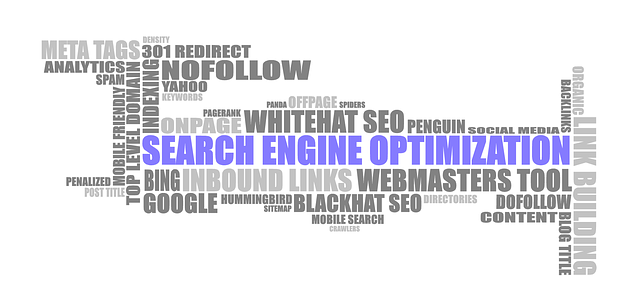White-Hat SEO Techniques focus on ethical, sustainable practices to enhance search engine rankings by prioritizing user value, content quality, and genuine backlinks. This long-term strategy avoids spammy tactics like keyword stuffing or link farming, fostering organic growth recognized as valuable resources by search engines. Effective ethical SEO includes on-page optimization (meta tags, headers, URLs, unique content) and off-page strategies (natural link building, social media engagement, influencer partnerships). Measuring success involves tracking key metrics like organic traffic, keyword rankings, bounce rates, and conversion rates using advanced analytics tools. Real-world case studies show significant growth through quality content, keyword research, internal linking, and enhancing user experience.
In today’s digital landscape, effective yet ethical Search Engine Optimization (SEO) is paramount. This article explores White-Hat SEO Techniques, providing a comprehensive guide to principled strategies that enhance online visibility without compromising integrity. From understanding the foundation of white-hat practices to mastering on-page optimization and navigating off-page link building, we delve into key principles and real-world case studies. Equip yourself with the knowledge to implement successful, ethical SEO strategies.
Understanding White-Hat SEO: The Ethical Approach

White-Hat SEO refers to the ethical and sustainable practices aimed at improving search engine rankings while adhering to Google’s guidelines. It’s a long-term strategy that focuses on providing value to users, rather than attempting to manipulate search algorithms. This approach prioritizes content quality, user experience, and building genuine backlinks from reputable sources. By employing White-Hat SEO Techniques, websites can gain visibility and authority without incurring penalties for dubious tactics.
This method involves keyword research, creating high-quality content, optimizing meta tags, ensuring mobile-friendliness, and cultivating a diverse yet relevant backlink profile. Unlike Black-Hat SEO, it avoids spammy practices like keyword stuffing, link farming, or using automated tools to manipulate rankings. Instead, White-Hat strategies foster organic growth, ensuring search engines recognize websites as valuable resources for their users.
Key Principles of Implementing Effective White-Hat Strategies

The success of any online presence hinges on Ethical Search Engine Optimization (SEO) practices, where the focus is on implementing white-hat techniques for sustained growth. Key principles include prioritizing content quality and relevance, ensuring website usability and accessibility across diverse devices, and fostering user engagement through interactive elements. High-quality content that provides value to users not only satisfies search engine algorithms but also encourages visitors to spend more time on the site, signaling to search engines that it is a reliable source of information.
White-hat SEO techniques also emphasize the importance of natural link building, achieving backlinks from reputable sources without engaging in manipulative practices. This organic approach helps improve domain authority and enhances the site’s credibility in the eyes of search engines. Additionally, adhering to webmaster guidelines by maintaining transparent coding practices, ensuring mobile optimization, and offering a seamless user experience across all platforms are vital components for long-term success in the digital marketing landscape.
On-Page Optimization Techniques for Moral SEO Practices

In ethical Search Engine Optimization (SEO), on-page optimization plays a pivotal role in upholding moral practices. White-Hat SEO techniques are the cornerstone of this approach, focusing on creating content that is both valuable and relevant to users while adhering to search engine guidelines. This involves optimizing meta tags, headers, and URLs for keyword relevance without resorting to manipulative tactics like keyword stuffing. Quality content creation, including well-researched and unique articles, ensures that pages provide a good user experience, encouraging visitors to engage and share.
Additionally, on-page optimization includes ensuring proper image optimization with alt tags, improving page load speed, and implementing structured data markup for enhanced search engine comprehension. These techniques not only boost a website’s visibility in search results but also foster trust among users and search engines alike. By prioritizing genuine user needs, ethical SEO practices contribute to a healthier online ecosystem, ensuring that websites remain relevant, reliable, and respectful of both users and the search algorithms that drive them.
Off-Page Optimization and Link Building Ethics

Off-page optimization, a crucial component of White-Hat SEO Techniques, focuses on strategies outside your website to boost search rankings. This includes link building, social media engagement, and influencer partnerships. Ethical approach in link building involves acquiring backlinks from reputable and relevant sources naturally. It means creating valuable content that attracts organic links, engaging in meaningful collaborations, and avoiding shady practices like buying or selling links, which can lead to severe penalties from search engines.
When it comes to social media, the goal is to build a genuine online presence by sharing useful information, fostering interactions, and establishing your brand as an authority in your niche. Collaborating with influencers who genuinely align with your values and audience can also enhance your site’s visibility without compromising integrity. Remember, the key is to focus on building relationships and creating value rather than chasing artificial metrics or engaging in manipulative tactics.
Measuring Success: Tools and Metrics for Ethical SEO

Measuring success in Ethical Search Engine Optimization (SEO) involves a strategic approach focused on long-term sustainability and user experience. Unlike Black-Hat SEO Techniques that aim for quick gains, White-Hat strategies prioritize natural growth and quality content. Tools and metrics play a crucial role in evaluating the effectiveness of these efforts. Advanced analytics platforms provide insights into organic traffic, keyword rankings, bounce rates, and conversion metrics, allowing marketers to understand user behavior and optimize their strategies accordingly.
For Ethical SEO, the emphasis is on acquiring high-quality backlinks from authoritative sources, creating engaging content that satisfies user intent, and ensuring website performance and accessibility. Metrics like domain authority, page speed rankings, mobile usability scores, and backlink profiles help gauge these aspects. By leveraging these tools and metrics, SEO practitioners can ensure their strategies align with White-Hat principles, fostering a robust online presence that resonates with both search engines and users alike.
Case Studies: Real-World Examples of Successful White-Hat SEO

In the realm of search engine optimization, ethical practices are paramount. Case studies offer tangible examples of success achieved through legitimate, long-lasting White-Hat SEO Techniques. Take, for instance, the story of a small e-commerce startup that focused on quality content creation and user experience enhancement. By implementing robust keyword research, they optimized product pages, attracting organic traffic from relevant search queries. This strategy not only increased their online visibility but also fostered a loyal customer base, showcasing the power of ethical SEO in driving sustainable growth.
Another compelling example involves a news website that prioritized high-quality, unique content and internal linking strategies. By consistently delivering in-depth articles on trending topics, they earned the trust of both readers and search engines. The result? Improved rankings for key news categories, demonstrating how White-Hat SEO Techniques can position websites as authoritative sources, thereby attracting and retaining audiences. These real-world examples underscore the effectiveness—and necessity—of ethical SEO practices in today’s digital landscape.
